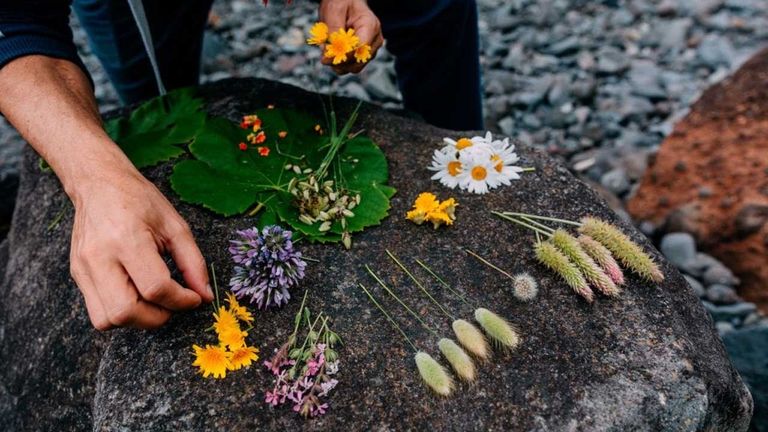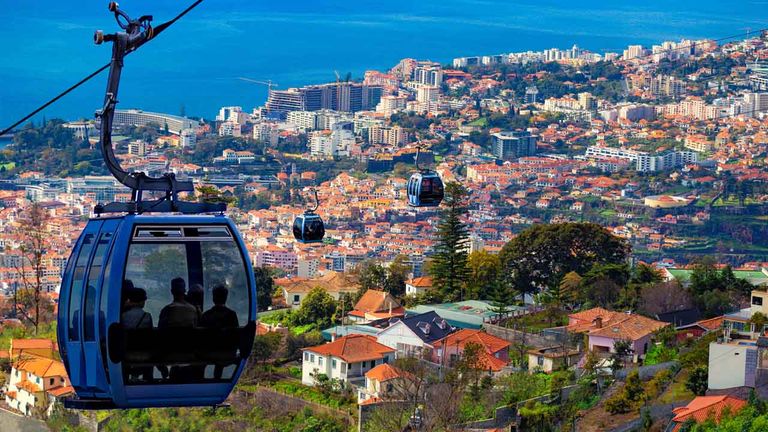Madeira, a semi-autonomous Portuguese island off the coast of Africa, is a well-known vacation destination — at least to Europeans. The island is one of four in the archipelago of Madeira and offers British-style hotels and Michelin-starred restaurants as well as plenty of adventurous ways to experience the island’s waterfalls and lush landscapes.
Madeira is a short ferry ride from Spain’s Canary Islands, and under two hours by air from both the Azores and mainland Portugal, making it a convenient multi-day stop as part of a longer regional itinerary.
Prior to my recent visit, when telling my U.S. friends that I was Madeira-bound, the response was nearly universal confusion. “Where’s that?” they’d ask. Others, seeing social media posts tagged “Portugal” during my trip, would recommend other parts of mainland Portugal, not realizing Madeira isn’t contiguous with the European continent.
Madeira is about nine hours from the U.S. East Coast via either Lisbon or the Azores, so the question I tossed around during my visit was, “What here is worth the time investment for American leisure travelers? How can travel consultants sell Madeira to their clients?”
Here’s what I found out.
Madeira Is Like Europe’s Hawaii
With palm trees, ocean surf crashing on breezy beaches and an abundance of plumeria and other botanicals in bloom, Madeira has a similar climate to the Aloha State (and it’s slightly closer to the U.S. East Coast). The climates were, in fact, so similar that Madeirans were recruited to immigrate to Hawaii in the late 19th century, where they became interwoven with the local culture and introduced the ukulele, linguica (sold as “Portuguese Sausage” in Hawaii), and malasadas — a donut-like confection — to the local zeitgeist.
Clients familiar with Hawaii will find echoes of it in Madeira, with friendly, laid-back locals eager to chat about the must-sees of their island and an overall zest for life that quickly becomes infectious. Add to that sunny weather and dramatic landscapes along the cliff-guarded coast of this volcanic island that appears to rise directly out of the sea, and it’s a recipe for a memorable visit.
The Best Hotels Madeira Island Has to Offer
Madeira has a long association with Great Britain — it’s also the largest origin for visitors to the island.
As a result, many of the resorts (by necessity) appear to cater closely to their top demographic: the Brits. Our first hotel stay, at the Cliff Bay Hotel, firmly embodied this ethos. With blonde woods, plenty of marble and brass, and a no-nonsense formality in the service delivery, it certainly seemed honed by years of repeat patronage by British guests.
 The hotel pool at Reid’s Palace, A Belmond Hotel
The hotel pool at Reid’s Palace, A Belmond Hotel
Credit: 2021 Reid's Palace, A Belmond HotelThat said, the property’s range of experiences is impressive. There are themed buffet nights (much beloved by longtime repeat travelers), but for sophisticated palates, there’s also Il Gallo d’Oro, which has earned two Michelin stars. The best view in the house, however, goes unquestionably to Avista Restaurant at the Les Suites at the Cliff Bay just next door. Guests can dine alfresco right next to the cliff’s edge, with sweeping views of the bay.
Similarly, Anglophile guests can check into Reid’s Palace, A Belmond Hotel, (where it’s oft mentioned that Winston Churchill penned his memoirs on the property) for afternoon tea on a verandah overlooking the English gardens, and also quite lovely clifftop views of Funchal, the island’s principal city.
A more international experience awaits at Savoy Palace, a member of The Leading Hotels of the World, right in Funchal, walking distance from some of the city’s best attractions. Clients booking the Savoy Premium Experience can take the included a la carte breakfast alfresco in the exclusive rooftop Jacaranda Lounge & Club, watching the sun rise over the city.
The Best Food on Madeira Island
In addition to two Michelin-starred restaurants, there’s a wealth of diverse eateries across the island. To luncheon at Faja dos Padres (a Faja is an outcropping of flat land between the sheer cliffs and the ocean), we took a cable car down to the oceanfront (the only other access is from the sea). From the cable car station, it’s a short walk through a vineyard and grove of avocado and banana trees to the restaurant where we grazed on local limpets called lapas, served alongside buttery garlic bread.
In the surf community of Paul do Mar, we sat at the brightly painted dining room in a tiny restaurant called Maktub and watched the chef crack baked-on salt crust off the caught-that-morning snapper before deboning and heaping its steaming white flesh onto platters.
At the Wanderer in Funchal, guests join in an intimate party for a welcome drink before taking a seat around a single table for a six-course tasting menu, mostly of items produced or foraged right on Madeira. The stars that evening included a whitefish in a sweet-salty-tart sauce based on Thai Tom Kha, and a decadent breast of duck with a guava and cider-vinegar emulsion.
 Many of the ingredients at the Wanderer in Madeira are foraged from the island.
Many of the ingredients at the Wanderer in Madeira are foraged from the island.
Credit: 2021 The WandererAt Kampo, it was small plates (the Berliner-style donut stuffed with Portuguese sausage and mushroom was a standout) followed by a huge side of flame-broiled steak. We also sampled fried scabbardfish sandwiches, honey cake, and — of course — Madeira wine on a morning food tour.
Clients can also take poncha (a local predecessor to the Brazilian caipirinha) with and without passionfruit at various stops around the island, or linger over coffee and the popular Portuguese pasteis de nata (egg tarts) at several relaxed cafes in the center of Funchal.
What To Do in Madeira Island
Much of what there is to see and do on Madeira has to do with the island’s fantastical natural beauty — the only limit is clients’ desire for high- or low-impact activity. Active travelers can take canyoning excursions, where guests will rappel down waterfalls to see parts of the island otherwise inaccessible.
 The Funchal Cable Car offers more than just views over the island.
The Funchal Cable Car offers more than just views over the island.
Credit: 2021 cristianbalate/stock.adobe.comAlso popular are hikes along the sea cliffs or walks along ancient canals called levadas, which were built by early Portuguese settlers to irrigate the drier side of the island for agriculture. A well-known one of these (that’s usually a stop on island jeep tours) is a short levada walk through a forest of laurel and mahogany from Ribeiro Frio to the Balcoes Outlook.
A nice day activity in Funchal (so named because early explorers noted an abundance of wild fennel) is to ride the Funchal Cable Car from the base station to Monte, not only for the views, but also for the botanical gardens and museum of African Art at the Monte Palace.
Afterward, the quickest way back down the mountain is to ride in a wicker sledge down the steep streets — a tradition among Madeirans for more than a century. Specially trained carreiros with rubber-soled shoes and jaunty straw boater hats help steer and break the carriages, which can speed up to 23 miles per hour down the street.
Madeira is also noted for artisan embroidery. In Funchal, visitors can pop into the museum and shop of Bordal, one of the island’s largest embroidery shops, to learn about the development of that industry on the island. Still today, the ladies working in the factory employ traditional hand techniques for this intricate craft.
For a longer day trip, the island’s northwest coast beckons. Here, the cliffs are so steep most of the coast road runs through tunnels bored through the rock. The coast is a bathers’ delight, offering either the black-sand beach in the small town of Seixal, or the Piscinas Naturais in Porto Moniz, natural pools created by the formations of lava rock, fed by the ocean.
Why Travel to Madeira?
The scenery is extraordinary, the mix of Portuguese and local culture is compelling, and the local cuisine is memorable. Travel time aside, Americans might return from Madeira wondering why the “secret” of this charming island has not yet been widely discovered by more of their compatriots.